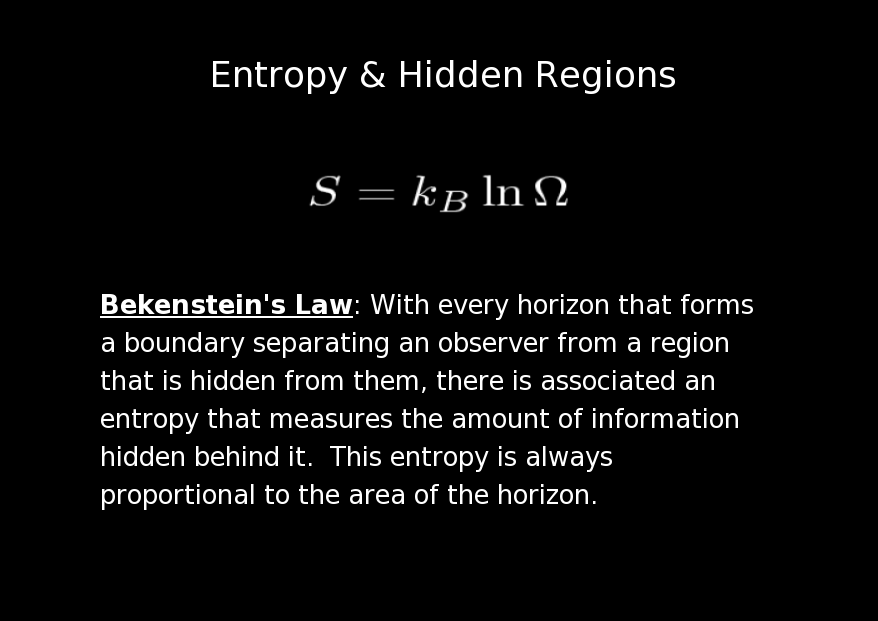










From the perspective of thermodynamics, the entropy of a system in thermodynamic equilibrium is a measure of the number Ω of possible microscopic states of the system that are consistent with its macroscopic thermodynamic properties, such as energy, temperature, pressure, and volume. (Systems in non-equilibrium states cannot generally be adequately described with a small number of macroscopic quantities and the previous definition doesn't hold in this case.) From the standpoint of information theory, it is an estimate of the amount of additional information needed to define the detailed microscopic state of a system that a macroscopic thermodynamic description doesn't specify. Thus entropy is related to missing information. Jacob Bekenstein found that there is an entropy associated with any hidden region. The entropy is a measure of the amount of information hidden within the region and is proportional to the area of the horizon bounding the region.
For the example of our accelerating spacecraft, knowing the temperature of the particles that we detect provides some information about the states of those particles and their hidden partners. But it doesn't give us enough information to know complete quantum states for every particle. The entropy associated with the hidden region is a measure of this missing information.
I am the author of the images and text except where otherwise indicated. Please contact me for permission if you wish to use any of my images or text.
Created on Wednesday 03 May 2006 by Mark A. Martin with KPresenter